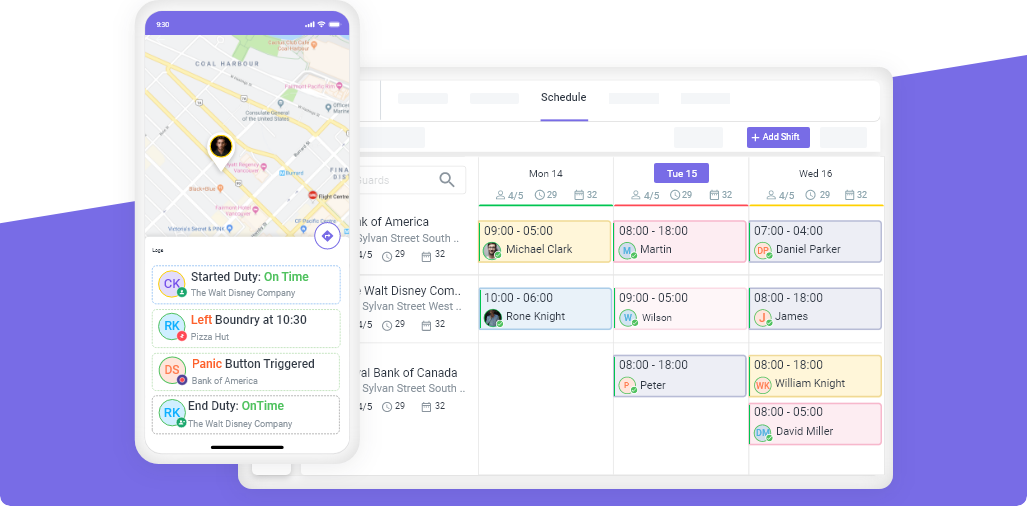Differences Between Managing In-house and Remote Employees
Mon, Feb 19, 2024
Read in 7 minutes
Managing remote workers will always be more difficult than managing remote workers. There are different team management skills needed while juggling with both.

The world is changing and so are the ways we work as well. Gone are the days when we used to sit inside an office, in front of a screen in a central office. Today, a large number of companies are adapting to the benefits and talent of remote teams. Sure, they come with their own set of advantages and keypoints and there is a need to adapt them. But before making any decision you need to be well equipped with the proper knowledge. Managing remote employees is no easy task. And they present unique challenges compared to the in-house teams.
We’ll explore the nuances of communication, collaboration, trust, and fostering a strong team spirit despite physical distance. Whether you’re a seasoned remote work veteran or just dipping your toes into this new world, team work is what will take you to great heights.
Managing remote employees who are scattered all over the world may seem like an easy task. You might be thinking, I just need to make a few calls, keep an eye on the work force and I will be good to go. But my dear friend, that is just scratching the surface. In traditional in-house work setting the leaders and managers can manage the team work easily. But even they know that micromanaging will not last long.
Employee satisfaction has gained momentum over the years and there is no denying that employee retention is needed. The leaders can only make successful business if they have the team that is as motivated as them. The managers and leaders not only need to have people management skills but communication, collaboration and strong team building spirit too. They need to make sure that the organization’s goals aligned with the employees’ goals as well. There will be many who will argue that the traditional methods are the best and there is no need to make any change. That is why the decision lies on you to make a decision. But first get to know both sides of the stories.
-
Pros and Cons of Remote Employee Management
Managing an in-house team involves overseeing employees who work from a centralized location, such as an office or a physical workspace. This traditional model of team management comes with its own set of dynamics and challenges.
Pros of Remote Employee Management
Flexibility: Remote work allows employees to work from anywhere. Giving them the flexibility to create their own schedules. This makes them feel more empowered and happy. This can lead to increased job satisfaction and work-life balance. If your team is working as a team no matter where they are located, the place will hardly matter.
Cost Savings: Managing remote employees can result in cost savings for businesses. And now let’s be honest, everyone likes to save a few bucks, right? Especially if you are just starting a business. With fewer employees in the office, companies can save on overhead expenses such as office space, utilities, and supplies. Moreover the end goal is proper team management, that will automatically decrease the cost.
Access to Global Talent: Remote work opens up opportunities to tap into a global talent pool. Managers can recruit top talent from anywhere in the world. Regardless of geographical constraints. This opens the doors of greater people management skills as the leader gets to connect with and work with different kinds of talent all over the world.
Increased Productivity: Some studies suggest that remote employees are more productive than their in-house counterparts. Now of course, there will be some who will suggest otherwise, and the decision is always subjective. Without the distractions of the office environment, remote workers can often focus better and get more done in less time. You can never be sure when you are managing remote employees.
Diverse Perspectives: Remote teams often bring together individuals from different backgrounds and cultures. This diversity can lead to a broader range of ideas and perspectives. Ultimately benefiting the team as a whole. When you are connected to people all over the world, you open the door to many opportunities. This makes you learn and grow on the personal level as well as professionally too.
Cons of Remote Employee Management
Communication Challenges: Effective communication is essential for remote teams. But it can be challenging to achieve without face-to-face interaction. Miscommunication and misunderstandings may arise more frequently. Employees might understand the context of the communication differently than intended which could lead to problems. Hence, requiring managers to be proactive in fostering clear communication channels.
Team Building: Building a strong sense of teamwork can be more challenging with remote employees. Afterall everyone loves having a casual chat over a cup of coffee, am I right? Without the opportunity for causal interactions in the office, managers must find alternative ways to foster team spirit and collaboration. This becomes a challenge as working as a team becomes a task when time difference, cultural difference and language differences come into play.
Monitoring Performance: It can be more difficult to monitor the performance of remote employees compared to in-house staff. Managers may struggle to track progress and provide timely feedback. Leading to issues with accountability and performance management. People management and workforce engagement might take a hit while managing remote employees.
Technology Dependence: Remote work relies heavily on technology. And technical issues can disrupt workflow and productivity. Managers must ensure that remote employees have access to reliable technology and provide support when technical issues arise. Team management will be made easier for managers if they maintain a proper balance between technology and human touch.
Isolation and Burnout: Remote work can be isolating for some employees, leading to feelings of loneliness and burnout. Managers must be mindful of the mental health and well-being of remote workers. And implement strategies to mitigate feelings of isolation.
-
Key Differences in Managing In-House vs. Remote Teams
Communication: While in-house teams benefit from face-to-face interactions. And remote teams rely on digital communication tools. Effective communication strategies must be tailored to each context to ensure clarity and alignment. Remote employees might use the tools that will help them communicate more easily and frequently but it will still lack the human touch. Team work makes the dreamwork is a saying that must be followed.
Trust and Accountability: In-house teams may have a higher level of immediate accountability due to direct oversight. Whereas remote teams require trust-building measures and outcome-based performance evaluations. While Managing remote employees the managers need to make sure that they are also building trust. This will automatically make the employees more accountable for their actions no matter where they are working from.
Culture and Engagement: In-house teams often thrive on shared experiences and a cohesive culture, while remote teams require deliberate efforts to foster engagement, collaboration, and a sense of belonging. Team management becomes an integral part when the leaders are trying to maintain work force engagement.
-
Expert tips on how to effectively manage a remote team
Irrespective of the team’s composition, effective people management skills are essential for success in today’s dynamic work environment. Here are some of the expert tips you can follow:
Clear Communication
There are basic steps you can follow to make that happen.
- Share clear expectations,
- Provide regular updates, and
- Encourage open dialogue to foster transparency
Working remotely can very easily lead to isolation and frustration. The goal is to increase productivity and make sure that the employees are happy and working as a team. Just putting in a little effort can mean a lot to someone and make them go an extra mile. If you are supportive of the employees, then you will see for yourself that they are supportive of you.
Adaptability
You will need to ditch the one size fits all approach. Some employees might be comfortable working from home while others might prefer working from the office. If you aim to force the decision on the work force then you will be making a big mistake. Listen to the preferences of your team members and try to find a middle ground.
Connect to the remote employees on a personal level
When your team is working from the office, bonds and relations are made easily. The managers or leaders might not have to have special team management tasks. While working under the same roof does require a level of certain behavior. But it can be taken a little lightly too. That is not the same case while working remotely. The managers will intentionally need to maintain dialogue with the employees. They need to make an effort to actually listen and solve in case there is any problem.
Conclusion
In conclusion, managing in-house and remote teams present unique challenges. Mastering the art of team management is within reach with the right strategies and mindset. By honing your people management skills and adapting to the specific dynamics of your team, you can navigate the complexities of modern workforce management with confidence and success.
Get a Free Trial
Sign up For Newsletter
Latest Blog Posts
Get Started
Start being productive & grow your business
with Novagems




